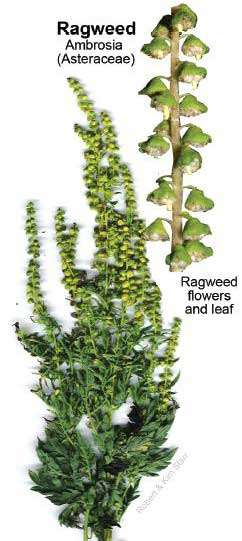During
ragweed pollen season (late summer and early fall), levels are highest in the morning.
The densities of adults and eggs were higher than expected in the common
ragweed in the northern sectors of a few plots, each located to the south of another plot (data not shown).
The short
ragweed pollen product Ragwitek is indicated for the treatment of short
ragweed pollen-induced AR, with or without conjunctivitis, confirmed by positive skin test or in vitro testing for pollen-specific IgE antibodies for short
ragweed pollen.
Finally, the authors linked projected pollen levels with information on
ragweed sensitization and population density to estimate how many people would be sensitized to
ragweed pollen in the future.
Allergy to
ragweed pollen has become increasingly common since the plant first gained a foothold in Europe in the mid-1900s but it is particularly prevalent in Eastern Europe.
* The report provides a snapshot of the global therapeutic landscape of
Ragweed Allergy
* Coverage of the
Ragweed Allergy pipeline on the basis of target, MoA, route of administration and molecule type
In a brief report titled "
Ragweed in Japan" (7) Durham (a botanist) cited the above-mentioned report by Hara (5) on the airborne pollens, and stated that
ragweed was uncommon in Japan, and therefore that airborne
ragweed pollen did not cause any problem.
Nelson emphasized that SLIT's approval also will create a new dilemma for physicians and their many patients with multiple allergies, say, to trees, dogs, and molds in addition to grasses or
ragweed.
In other words, over the course of a month, a patient on SLIT will take a roughly 30 times greater dose of grass or
ragweed allergen than will a patient on SCIT.
26 ( ANI ): Researchers are set to discuss and make recommendations on the safety and efficacy of oral tablets used to treat
ragweed allergy symptoms, during a public meeting of the Allergenic Products Advisory Committee, organized by the Food and Drug Administration (FDA).
A single
ragweed plant can produce up to a billion pollen grains, causing misery for millions of people who suffer from poorly managed seasonal allergic rhinitis, better known as hay fever, according to the American Academy of Allergy, Asthma and Immunology.
